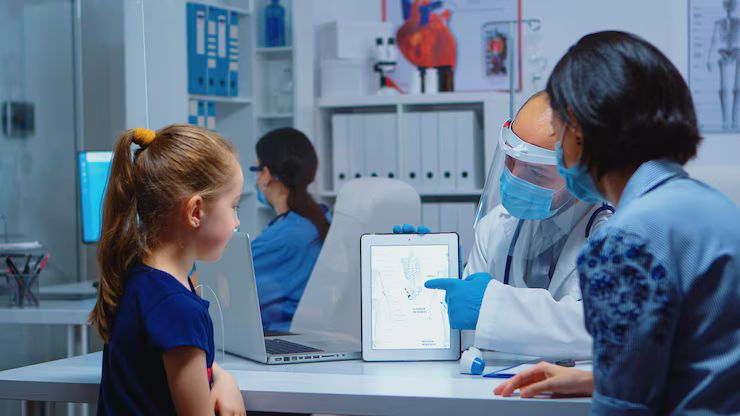Tracking Child Growth and Development Made Easier with On-Demand Telemonitoring
- Elizabeth Santoso
- Jun 19
- 2 min read
Monitoring child growth and development is an important aspect in ensuring that children develop optimally, both physically, cognitively, and socially-emotionally. However, not all families have easy access to health facilities or medical personnel who can conduct routine evaluations, especially in remote areas or with limited mobility. To address this challenge, the use of telemonitoring supported by on-demand health workers is an effective solution in tracking and monitoring child growth and development in real-time.
Telemonitoring is the use of digital technology to monitor a patient's health condition remotely through an application, wearable device, or other measuring device. In the context of child growth and development, telemonitoring allows parents to input data on their child's development periodically, from weight, height, motor skills, to language development and social behavior.
On-demand health workers consisting of pediatricians, developmental psychologists, and nutritionists can access the data directly through a digital platform. They conduct a comprehensive evaluation based on the data submitted and provide recommendations as needed, ranging from nutritional advice, developmental stimulation, to follow-up if delays or developmental disorders are found.
The main advantage of this system is the ease of access to health services without having to always come to a health facility physically. Parents can consult anytime via video call, chat, or voice call to get guidance and support. This approach is very helpful for families who are very busy, have limited transportation, or live in areas with minimal health facilities.
In addition, telemonitoring supports faster and more targeted interventions. With real-time data, health workers can detect signs of risk of developmental disorders as early as possible. This allows for early treatment that has the potential to significantly improve child development outcomes.
However, the use of this technology also requires awareness and ability from parents to record and report data consistently. In addition, technological infrastructure such as a stable internet network and adequate digital devices are crucial for optimal service.
In facing these challenges, the role of education and assistance is very important. On-demand health workers not only function as evaluators, but also as educators who guide parents to understand the signs of normal development and appropriate stimulation steps.
Overall, tracking child growth and development through telemonitoring by on-demand health workers is an important innovation that improves access to and quality of child health services. With this technology, the process of monitoring growth and development becomes easier, faster, and more responsive, which ultimately supports maximum child development and helps parents provide the best care for their children.



Comments